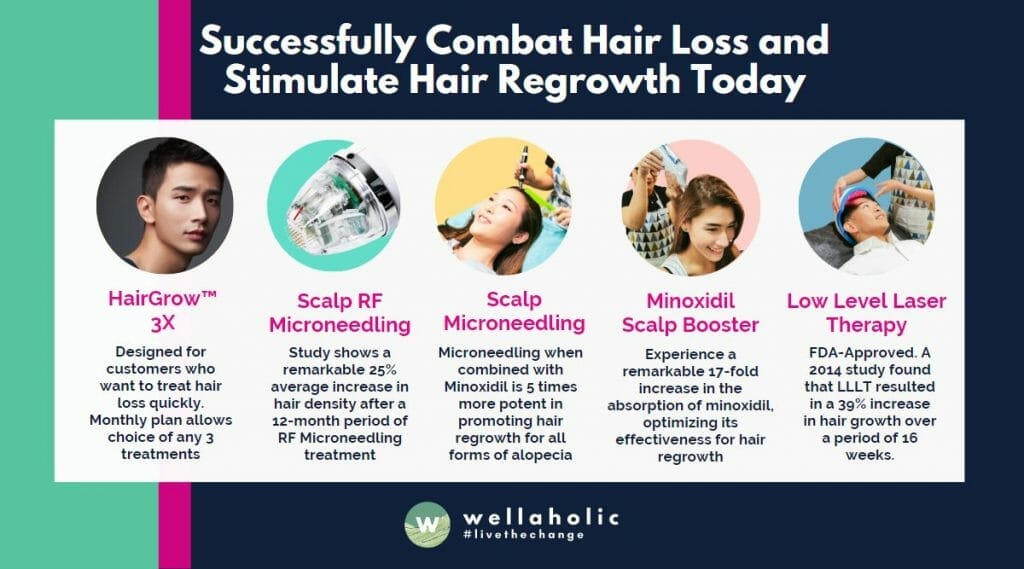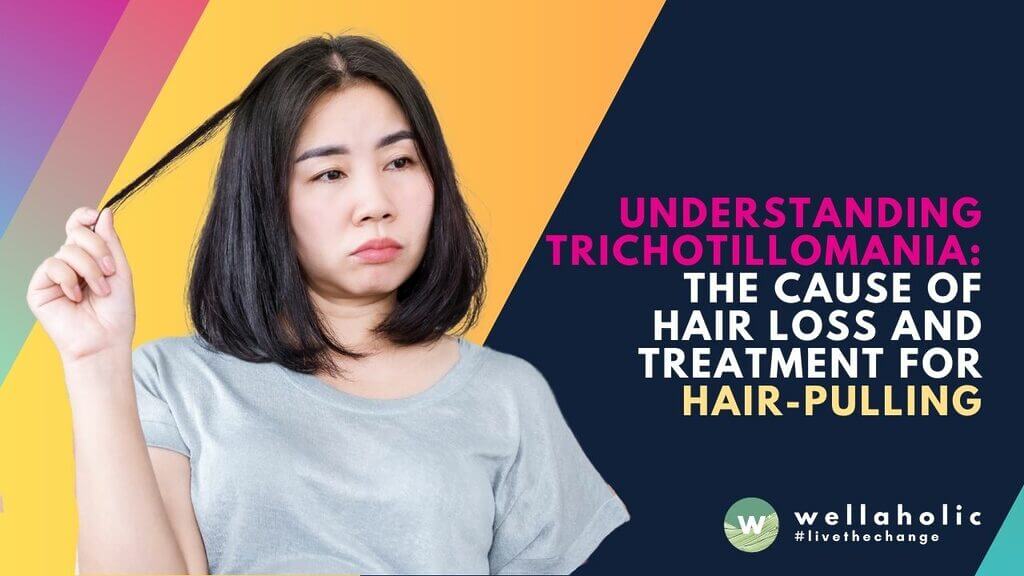
Understanding Trichotillomania: The Cause of Hair Loss and Treatment for Hair-Pulling Disorder

🧠 Understanding Trichotillomania
A Complete Guide to Hair-Pulling Disorder
📊 Key Facts
⚠️ Warning Signs
💡 Treatment Approaches
Professional wellness solutions in Singapore

Understanding Trichotillomania: The Cause of Hair Loss and Treatment for Hair-Pulling Disorder
Have you ever wondered why some people can’t resist the urge to pull out their own hair?
As aesthetic professionals at Wellaholic, we’ve seen our share of hair loss cases. But trichotillomania stands out as a unique and often misunderstood condition. We’ve noticed that many of our customers are unaware of this disorder, which can lead to noticeable hair loss and emotional distress. Through our experience at Wellaholic and Laser Clinics Australia, we’ve learned that trichotillomania is more than just a bad habit. It’s a complex mental health issue that requires understanding and proper treatment.
In this article, we’ll share what we’ve learned about the causes of trichotillomania and the available treatments for this hair-pulling disorder.
Trichotillomania is a complex psychological disorder that involves the recurring urge to pull out one’s hair, leading to hair loss.
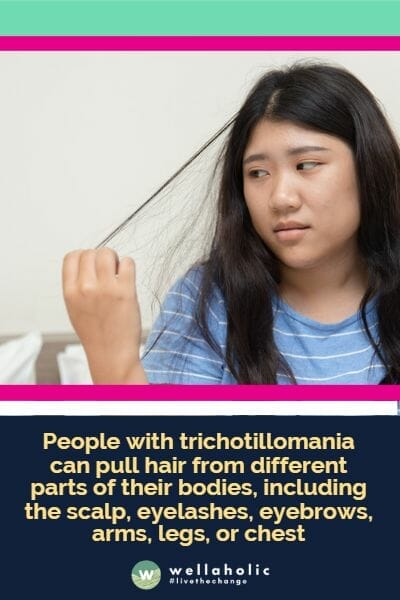
Overview of Trichotillomania
Trichotillomania is a complex psychological disorder that involves the recurring urge to pull out one’s hair, leading to hair loss. Individuals with trichotillomania may experience a range of symptoms, including uncontrollable hair-pulling behaviors, resulting in noticeable hair loss and damage to the hair follicles. This disorder often requires targeted therapy and mental health support to help individuals manage and overcome the compulsive urge to pull their hair.
What is Trichotillomania?
Trichotillomania is a mental health disorder characterized by the repetitive urge to pull out one’s hair, leading to noticeable hair loss. This compulsive behavior can have a profound impact on an individual’s self-esteem and overall well-being. It is important to recognize trichotillomania as a psychological condition that requires understanding, support, and appropriate treatment to address the underlying causes and symptoms of hair-pulling.
Symptoms and Causes
Patients with trichotillomania often experience uncontrollable urges to pull their hair, leading to noticeable hair loss and damage to the hair follicles. The causes of trichotillomania may be linked to psychological factors, including stress, anxiety, or underlying mental health conditions such as obsessive-compulsive disorder. Understanding the symptoms and causes of trichotillomania is essential in providing effective treatment and support for individuals struggling with this hair-pulling disorder.
Psychological Impact
Trichotillomania can have a profound psychological impact on those affected, leading to feelings of shame, embarrassment, and low self-esteem due to noticeable hair loss. It is essential to address the psychological implications of trichotillomania and provide comprehensive therapy and support to help individuals cope with the urge to pull their hair and work towards recovery. Effective treatment options can contribute to managing trichotillomania and promoting hair regrowth, ultimately improving the mental well-being of individuals struggling with this disorder.
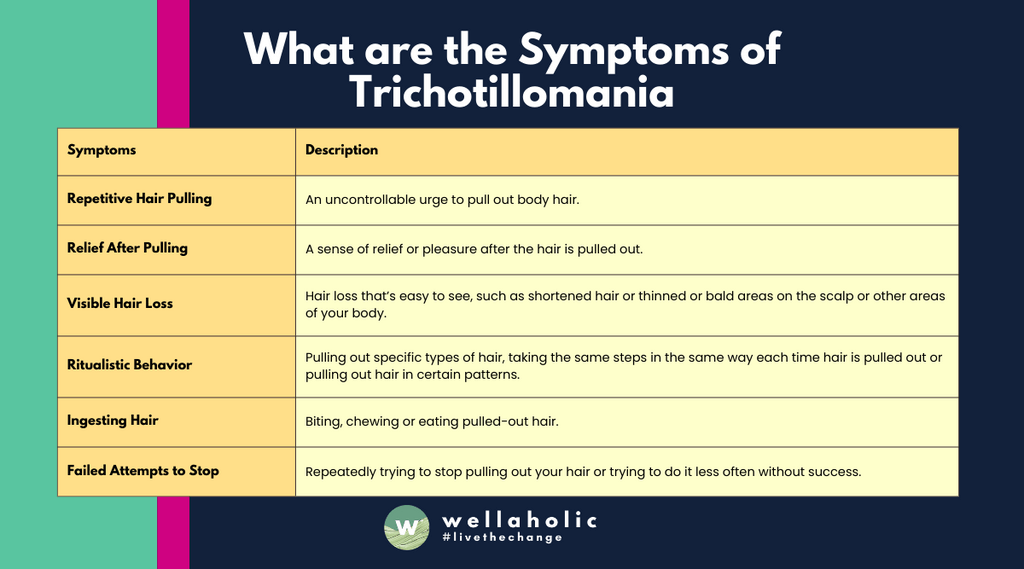
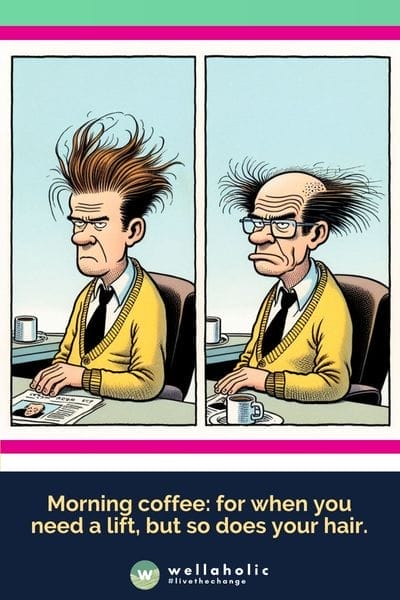
Understanding Hair Loss
When it comes to understanding hair loss, it’s essential to consider the various types and causes of this common issue. Hair loss can occur due to a range of factors, including genetic predisposition, hormonal changes, medical conditions, and external stressors. By understanding the underlying causes and potential solutions for hair loss, individuals can better address and manage this condition to promote healthy hair regrowth and overall well-being.
Types of Hair Loss
Hair loss can manifest in different forms, including pattern baldness, alopecia areata (an autoimmune condition resulting in patches of hair loss), and telogen effluvium (excessive shedding due to a disruption in the hair growth cycle). Each type of hair loss may have distinct characteristics and treatment approaches, emphasizing the importance of accurate diagnosis and targeted treatment for effective management.
Causes of Permanent Hair Loss
Permanent hair loss can result from various causes, such as hereditary factors, hormonal imbalances, certain medical treatments (e.g., chemotherapy), and scalp conditions like scarring alopecia. Understanding the underlying mechanisms of permanent hair loss is crucial in developing comprehensive treatment plans to address the specific factors contributing to this persistent condition.
Trichotillomania as a Cause of Hair Loss
Trichotillomania, also known as hair-pulling disorder, is a unique cause of hair loss, characterized by the compulsive urge to pull out one’s hair. This condition can have a significant impact on an individual’s mental health and well-being, requiring specialized therapy and support to address the compulsive hair-pulling behaviors.

Prevention
Preventing trichotillomania involves addressing underlying psychological factors and promoting healthy coping mechanisms. Individuals at risk of trichotillomania may benefit from stress-reduction techniques, cognitive-behavioral therapy, and supportive environments that encourage open communication about mental health struggles.
Moreover, fostering awareness about trichotillomania within communities and educational settings can help reduce stigma and provide essential support for individuals experiencing hair-pulling behaviours. Early intervention and comprehensive mental health care can play a vital role in preventing the onset of trichotillomania and minimizing its impact on individuals’ well-being.
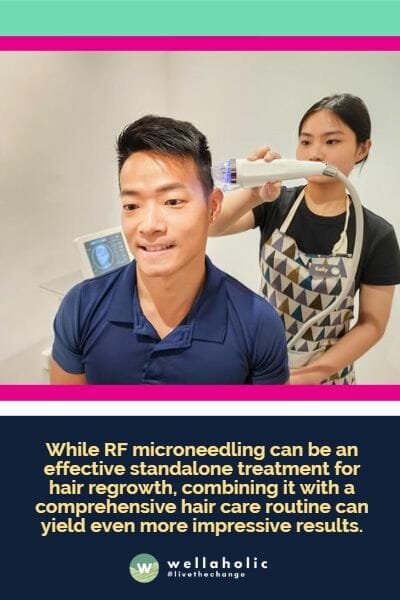
Treatment for Trichotillomania
We’ve seen a growing number of customers at Wellaholic seeking help for trichotillomania. This hair-pulling disorder affects about 2-4% of people worldwide. It’s not just about hair loss; it’s a complex condition that impacts mental health too.
Our experience shows that a multi-faceted approach works best. We often recommend a combination of therapy and hair restoration treatments. Cognitive Behavioral Therapy (CBT) has shown promising results, with up to 60% of patients reporting improvement. For hair regrowth, we’ve had success with low-level laser therapy. It’s gentle, non-invasive, and can stimulate new hair growth in many cases. Remember, recovery is a journey. We’re here to support you every step of the way.

Conclusion
In conclusion, based on my extensive interactions with customers who have experienced trichotillomania, and in light of my ongoing research in the field of aesthetic health, I’ve observed that this condition is far more than just a habit; it’s a complex psychological disorder that requires a compassionate and multifaceted approach to treatment.
The emotional and psychological aspects of trichotillomania are paramount, and it’s crucial to address these alongside any physical treatments for hair loss. Behavioral therapies, particularly Cognitive Behavioral Therapy (CBT), have shown promising results in helping individuals manage their urges and reduce hair-pulling behaviors.
Furthermore, when it comes to treating the physical aspect of hair loss, options like PRP (Platelet-Rich Plasma) treatments and specific hair growth stimulating products can be beneficial. However, it’s important to remember that these treatments should be considered as part of a broader, more holistic approach that includes psychological support.
Frequently Asked Questions (FAQ)
What percentage of the population is affected by trichotillomania?
Trichotillomania affects approximately 1-2% of the population, with a higher prevalence in females. This compulsive hair-pulling disorder can start in childhood or adolescence and continue into adulthood
Is trichotillomania more common in any specific age group?
Trichotillomania commonly begins in late childhood or early adolescence. It is most frequently observed in preteens and teenagers, but it can persist or start even in adulthood.
Can trichotillomania lead to permanent hair loss if left untreated?
If trichotillomania is persistent and severe, it can lead to permanent hair loss due to damage to the hair follicles. Early intervention and treatment are crucial to prevent long-term damage.
Are there any genetic factors associated with trichotillomania?
Research suggests a genetic predisposition to trichotillomania, indicating that individuals with a family history of the disorder may have a higher risk of developing it.
How effective is Cognitive Behavioral Therapy (CBT) in treating trichotillomania?
Cognitive Behavioral Therapy (CBT) is considered one of the most effective treatments for trichotillomania. Studies show significant improvement in symptoms for many patients undergoing CBT.
What is the success rate of hair regrowth treatments for individuals with trichotillomania?
The success rate of hair regrowth treatments in trichotillomania patients varies. While treatments can be effective, the key to success often lies in simultaneously addressing the psychological aspect of the disorder.

Serene Chiam, Aesthetic Director (LinkedIn)
Serene Chiam, the Aesthetic Director at Wellaholic in Singapore, is a highly experienced and knowledgeable professional in the field of hair regrowth and aesthetics. With over a decade of expertise, including her previous role as a Clinical Aesthetics Manager with Laser Clinics Australia, Serene brings a wealth of knowledge and practical experience to her clients. Her CIDESCO certificate in skin care and Bachelor of Health Science (Aesthetics) from Torrens University of Australia further demonstrate her commitment to providing the highest quality hair regrowth treatments and aesthetic services.
Contact Serene at [email protected]
GET IN TOUCH
Book Now Pay Later

HairGrow™ 3X Ultimate Hair Loss Treatment
- ⭐ Supercharged Regrowth: HairGrow™ 3X is a premium plan, crafted for individuals seeking to expedite their hair regrowth journey and tackle hair loss effectively.
- ⭐ Personalized Selection: This package lets customers pick three hair loss treatments, customizing their plan to their needs.
- ⭐ Balancing Value & Variety: HairGrow™ 3X provides a unique blend of cost-effectiveness and choice, granting access to top-tier treatments at a significant discount.
- ⭐ Free Supply of Minoxidil. HairGrow™ 3X also includes a monthly supply of Minoxidil with Royal Jelly to jumpstart hair growth.
- ⭐ Award-Winning. Wellaholic’s treatments have been recognized by top beauty publications such as Daily Vanity, Beauty Insider, and Tropika Club Magazine.
- ⭐ Over 2000 Verified Customer Reviews. Wellaholic has over 30 industry awards and over 2000 positive reviews from customers, and >50% are repeat customers.
